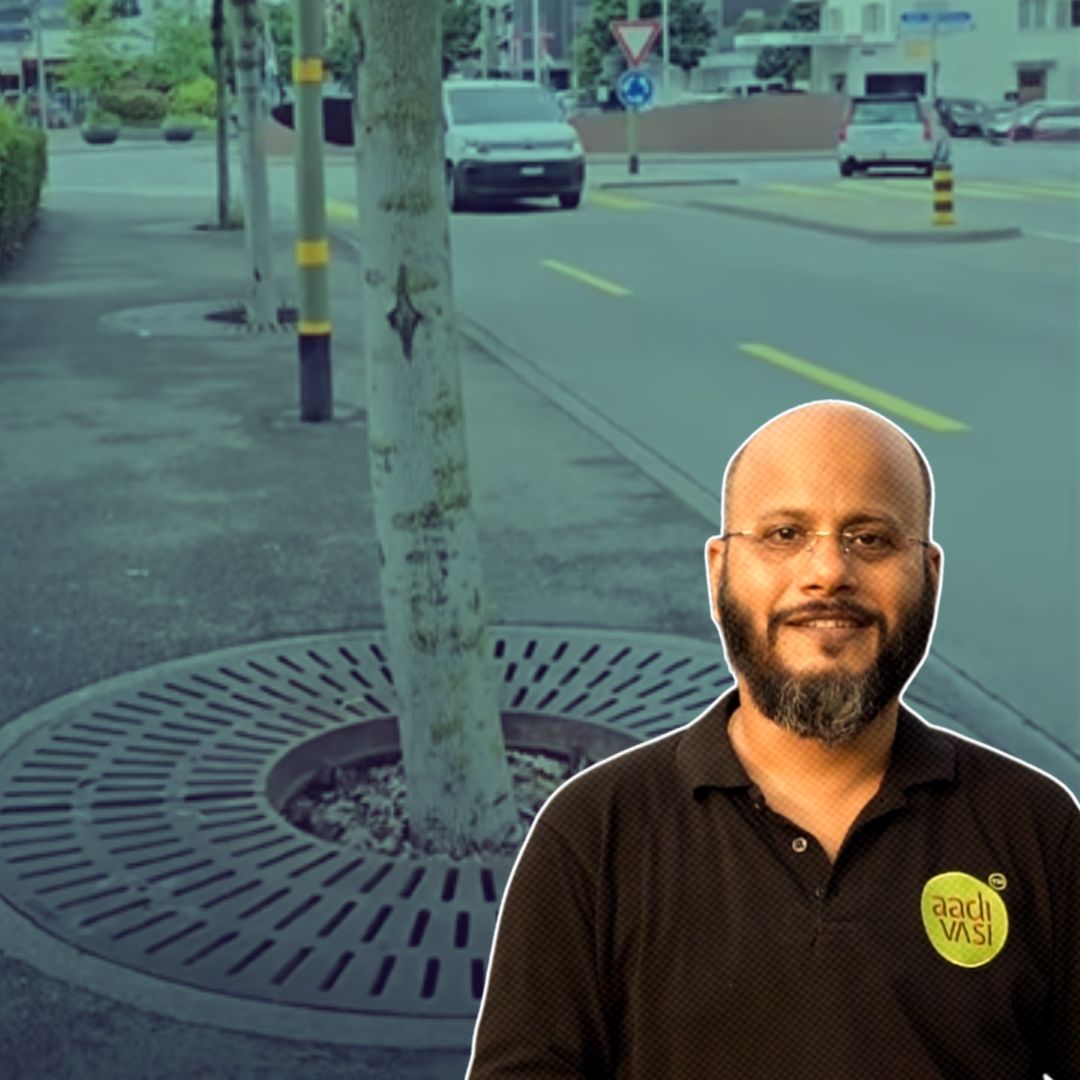Dr Bikrant Tiwary, a renowned social entrepreneur and environmentalist from India, recently shared a compelling video from Zurich that showcases innovative urban planning techniques allowing rainwater to nourish trees even beneath concrete pavements.
This approach ensures the health of urban greenery without compromising infrastructure. Contrasting this with Indian cities, where tree roots often suffocate under poorly designed concrete, Tiwary has urged Indian policymakers and urban planners to adopt similar sustainable solutions.
The video has gone viral on social media, sparking widespread public discourse on the urgent need to rethink urban development in India. However, as of now, no formal statements have been issued by government officials in response to this call.
Zurich’s Innovative Urban Planning: A Model for Sustainable Cities
The video shared by Dr Tiwary highlights Zurich’s pioneering urban design where pavements are carefully shaped to channel rainwater directly to the roots of trees planted along city streets. This system uses permeable concrete and subtle gradients to ensure that water penetrates the soil, nourishing the trees while maintaining the structural integrity of the pavements.
Dr Tiwary emphasises, “In Zurich, even concrete respects nature—trees get their share of rainwater through smart urban planning. It’s a perfect blend of development and ecology.” This method not only supports tree health but also reduces urban runoff, mitigating flood risks and improving the city’s microclimate. Urban planners and environmentalists have praised Zurich’s approach as a benchmark for sustainable city living.
India’s Urban Challenge and the Opportunity for Change
India’s rapid urbanisation has often come at the expense of its urban greenery. In many Indian cities, trees struggle to survive as their roots are confined and suffocated beneath impermeable pavements and poorly planned infrastructure. This neglect leads to weakened trees, reduced air quality, and diminished urban biodiversity.
Dr Tiwary’s video has reignited the conversation on the necessity of integrating nature-sensitive designs in Indian urban planning. Drawing from his extensive experience—leading initiatives that have planted over 20 million trees and created thousands of waterbodies—he advocates for adopting rainwater-friendly pavements and infrastructure that support tree growth and water conservation.
While the public response has been overwhelmingly positive, government bodies and urban development authorities have yet to publicly address or commit to such innovations. Experts suggest that incorporating these designs could significantly improve the quality of life in Indian cities by creating greener, more breathable urban environments.
The Logical Indian’s Perspective
At The Logical Indian, we firmly believe that sustainable development must harmonise the needs of urban growth with environmental preservation. Dr Tiwary’s message is a timely reminder that progress is not solely measured by concrete and steel but by how well we integrate nature into our cities.
Thoughtful, innovative urban design can nurture both human communities and the environment, creating spaces that are healthier, more resilient, and more liveable.
As India’s cities continue to expand, the challenge lies in balancing infrastructure development with ecological sensitivity. We invite our readers to engage with us: How can Indian cities better innovate to protect their trees and environment? What practical steps can urban planners, citizens, and policymakers take to ensure our cities breathe easier and grow greener?











